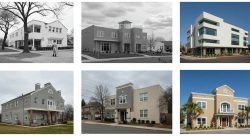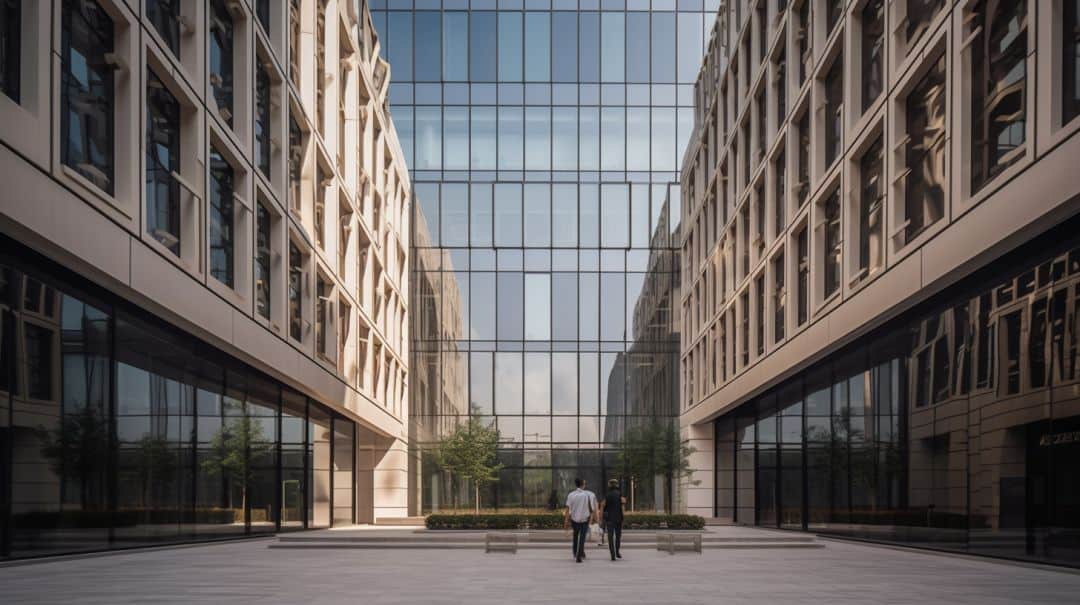Unlock the Potential of Your Retail Space: Discover the Transformative Power of EIFS in Modern Storefront Renovation
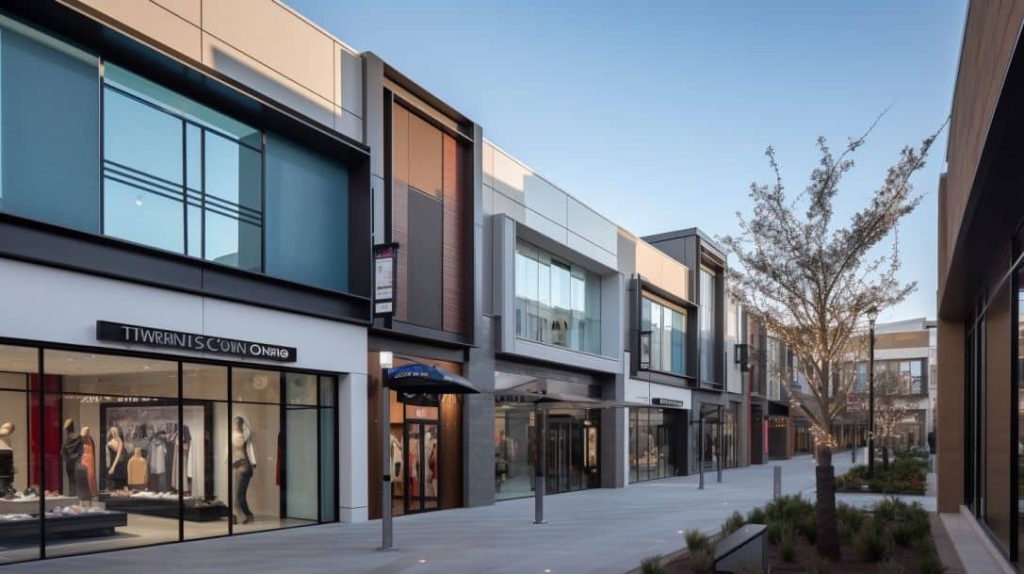
Introduction
The retail landscape has undergone seismic shifts in recent years, with the rise of e-commerce putting immense pressure on traditional brick-and-mortar stores. Many retail spaces today face declining foot traffic and sales, leading to vacant storefronts and struggling shopping centers. However, all hope is not lost for aging and underperforming retail properties. Exterior insulation and finish systems (EIFS) offer an innovative solution to breathe new life into failing retail spaces.
EIFS refers to multi-layered exterior wall systems that provide insulation, weatherproofing, and aesthetic finish options. With versatile design potential and significant energy efficiency benefits, EIFS can help transform the look, feel, and performance of retail spaces. From dramatic visual overhauls to slashing HVAC costs, EIFS offers the ideal way to reinvigorate retail properties and make them competitive in today’s market.
This guide will explore how EIFS can revitalize failing brick-and-mortar retail, from identification of issues to hiring professional EIFS contractors for remodeling projects. We’ll also look at key factors like return on investment, project timelines, and integrating EIFS into sustainable retail design. For any retail property owner struggling with vacancies and declining revenue, EIFS presents a strategic opportunity to reinvent their spaces and usher in a new era of success.
Understanding the Benefits of EIFS for Retail Spaces
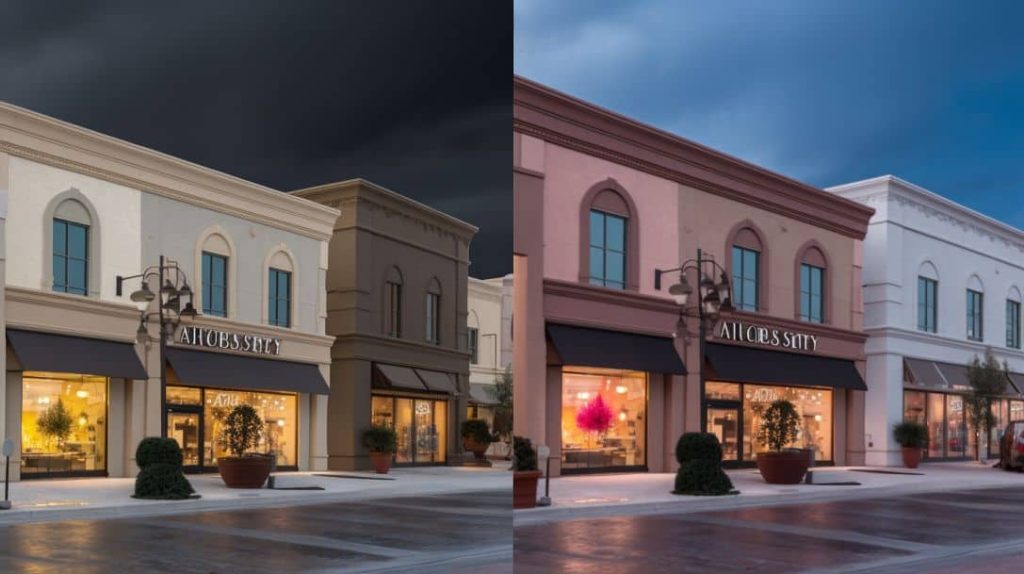
EIFS offers numerous advantages that make it an ideal choice for revitalizing struggling retail properties, including:
Aesthetic Versatility of EIFS
- Wide range of colors, textures, and finishes to completely transform exteriors
- Ability to mimic styles from traditional to ultra-modern aesthetics
- Seamless, monolithic appearance for a sleek, contemporary look
- Integrate branding elements like logos into EIFS finishes
- Conceal dated or damaged façades for a dramatic visual overhaul
Energy Efficiency and Cost Savings
- Continuous insulation minimizes heat and cooling losses
- Reduce HVAC costs by up to 30% with proper EIFS installation
- Mitigate exposure leading to lower maintenance expenses
- High R-values between R-5 to R-7 per inch of insulation
- Achieve sustainability certifications like LEED more easily
Durability and Longevity in Retail Applications
- Withstand exposure, moisture, and impacts on retail settings
- Lengthen the lifecycle of aging buildings by protecting substrates
- Prevent deterioration of structural issues
- Fire resistance properties for safety
- Low-maintenance and crack-resistant once installed correctly
By leveraging these advantages, EIFS offers the ideal façade solution to revive retail spaces aesthetically and functionally. The next section will explore how to identify which repairs are needed for failing retail properties.
Identifying Repairs Needed for Failing Retail Spaces
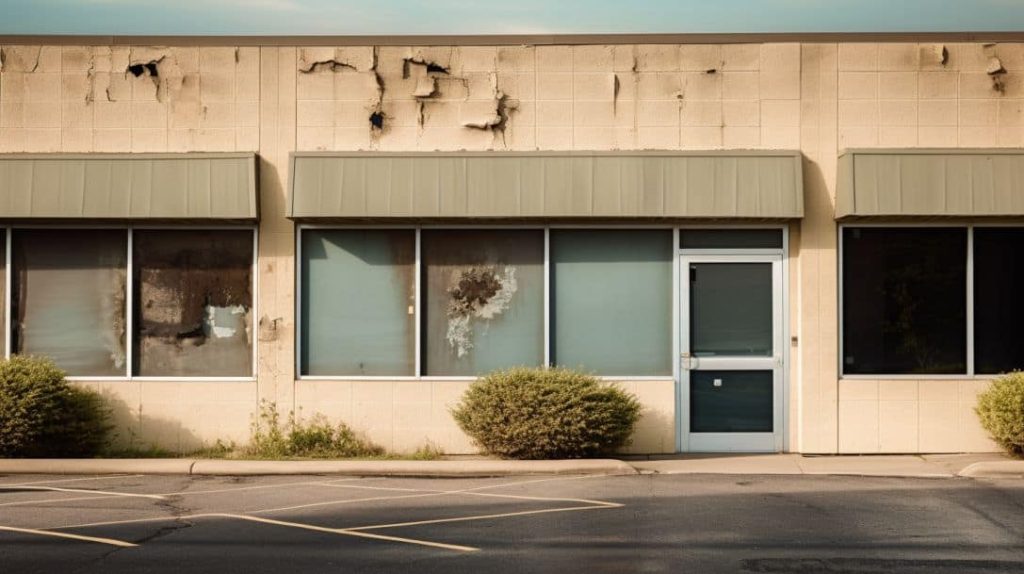
Before undertaking any EIFS installation, a thorough evaluation of the current retail property is crucial to identify necessary repairs. Some key areas to assess include:
Assessing Common Structural Issues
- Cracks in walls, foundations, or roofs
- Water damage, rotting wood, mold, or mildew
- Damaged or faulty electrical systems
- Signs of pests or termites
- Poor insulation leads to air leaks
- Drainage or gutter system failures
- Deteriorating surfaces like peeling paint or plaster
Energy Inefficiencies in Retail Spaces
- High monthly electricity and gas bills
- Frequent use of portable heating/cooling units
- Hot/cold spots indicating insulation gaps
- Excess moisture and humidity issues
- Drafts from doors, windows, or wall cavities
Aesthetic and Surface Deterioration
- Faded, flaking, or cracked exterior finishes
- Dated or unappealing façade materials
- Poor exterior lighting or signage visibility
- Lack of branding display opportunities
- General visual obsolescence
EIFS Inspection Checklist
A certified EIFS inspector can perform detailed moisture analysis, structural evaluations, and thermographic imaging to identify underlying issues. An inspection should cover:
- The moisture content of walls at various heights
- Adhesion testing of finishes
- Evaluating the condition of seams and joints
- Signs of leaks, cracks, deterioration
- Meeting current building codes
Addressing any identified repairs before EIFS installation will maximize longevity and prevent future problems.
Mastering EIFS Repair for Commercial Properties
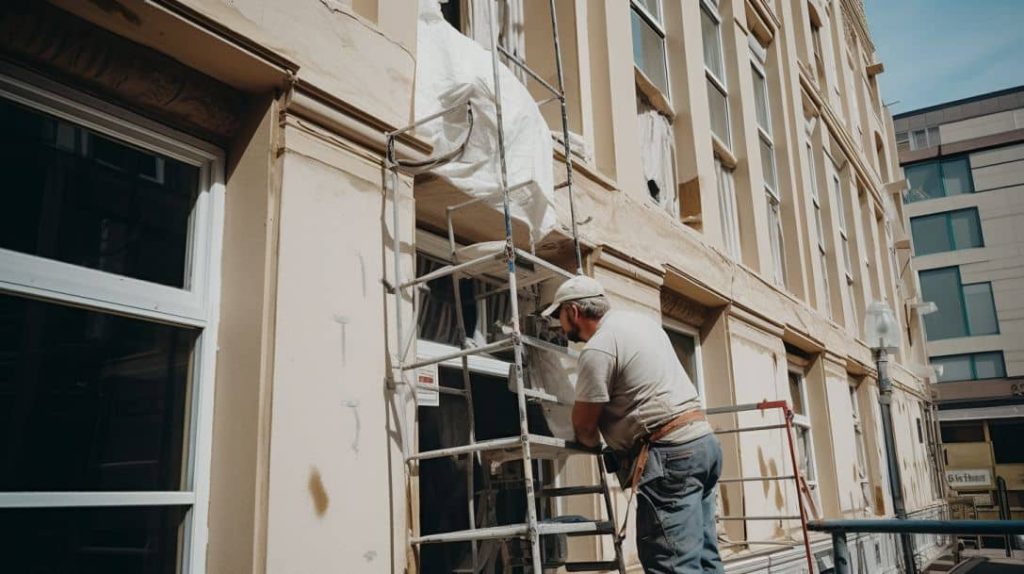
Once a failing retail building has been thoroughly evaluated, proper EIFS repair techniques are critical for commercial properties. This involves:
Understanding EIFS Layers and Components
EIFS consists of:
- Adhesive to bond system to substrate
- Insulation boards often expanded polystyrene for thermal resistance
- Base coat reinforced with glass fiber mesh
- Finish coat for aesthetic appearance and protection
Other components like flashings and sealants are also vital. Having in-depth knowledge of the EIFS anatomy ensures appropriate repairs.
Step-by-Step Repair Process
- Inspect and identify the damage extent
- Remove loose or failing finish coat
- Repair or replace damaged insulation boards
- Install new reinforced base coat as needed
- Apply new primer and finish coat
- Caulk and seal all joints, seams, openings
Addressing Water Infiltration and Moisture Issues
- Identify and remedy sources of leaks or moisture
- Replace water-damaged materials and insulation
- Use advanced sealants, flashings, vapor barriers
- Opt for drained EIFS designs allowing drainage
Ensuring Proper Ventilation after EIFS Repair
- Avoid mold/mildew risks with adequate ventilation
- Carefully inspect and repair HVAC systems
- Install ventilation fans and humidity controls
- Monitor for condensation behind new EIFS
With proper training and material selection, retailers can successfully repair EIFS to revamp their properties.
Temporary EIFS Fixes for Retail Properties
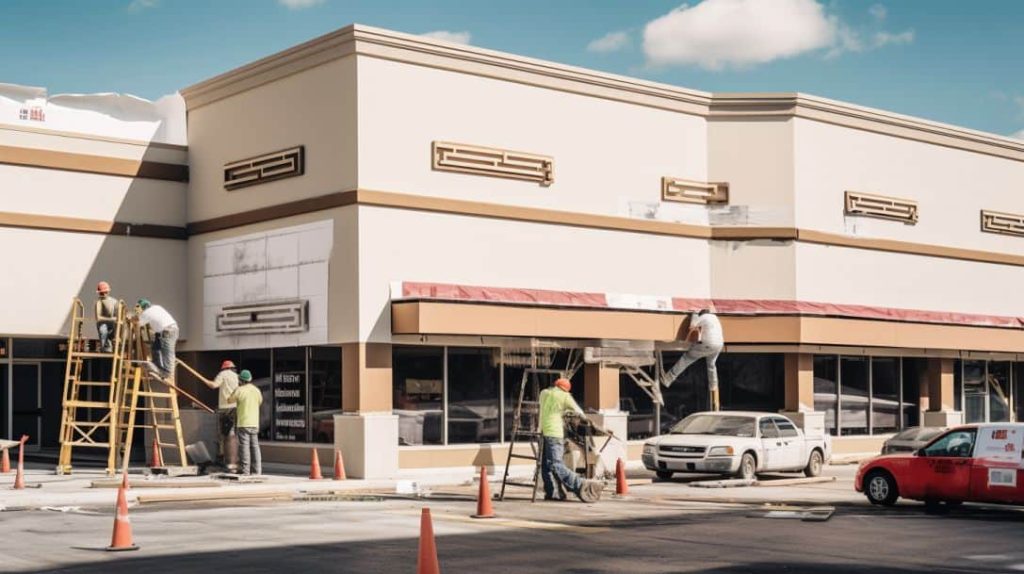
In some cases, retailers may opt for quick, temporary EIFS repairs before taking on full remodeling projects. Potential reasons include:
- Limited budgets for immediate fixes only
- Upcoming building demolition or major renovations
- Short-term pop-up store or seasonal retail space
- Stopgap during the long-term repair planning stage
- Protecting the building from further water damage
Quick Fixes and Their Limitations
- Caulking cracks and seams
- Spot repairs of small damaged areas
- Painting/coating damaged finish coat
- Removing vegetation contacting EIFS
- Sealing minor breaches around fixtures
While low-cost, these solutions are short-lived. The underlying problems with EIFS components and water management remain unsolved.
When to Opt For Temporary vs. Permanent Solutions
Temporary EIFS fixes make sense when:
- Planning major overhauls within 12-24 months
- Sale, redevelopment, or demolition planned soon
- Limited funds available currently
For long-term viability, full repairs by EIFS professionals are best.
Protecting Retail Spaces until Permanent Repairs
To maximize safety and lifespan, combine temporary fixes with:
- Ongoing monitoring for new damage
- Further deterioration prevention
- Diverting runoff away from EIFS
- Adding extra sealant in vulnerable areas
- Planning permanent repairs ASAP
Temporary solutions can buy retailers time, but permanent EIFS repairs are essential for retail properties.
Integrating EIFS into Your Next Remodeling Project
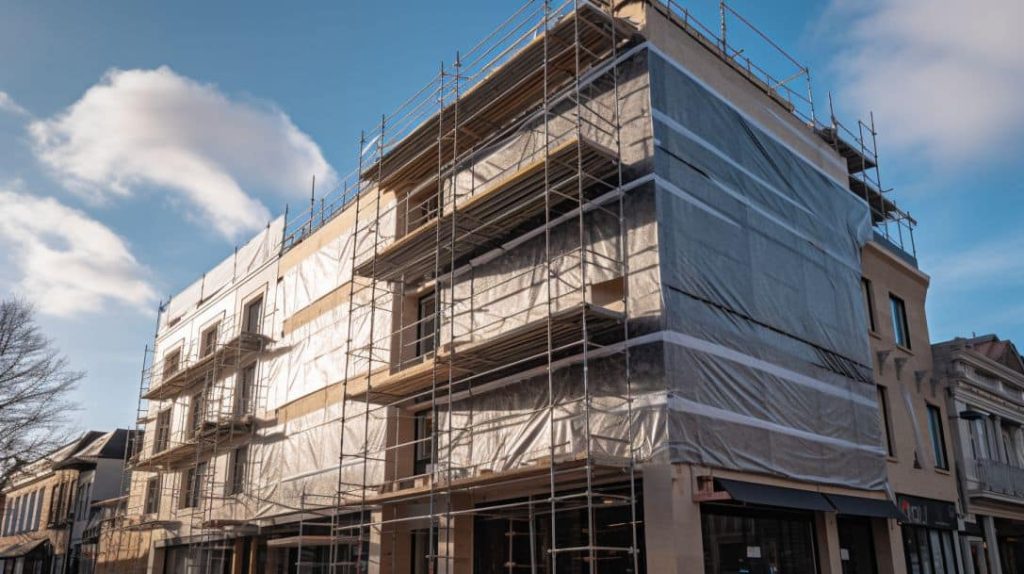
For more extensive retail renovations, EIFS can be integrated as part of the remodeling plans. This requires careful planning and design considerations:
Planning and Design Considerations with EIFS
- Evaluate existing substrate and structure
- Select optimal EIFS system design and components
- Account for building openings, penetrations, and architectural details
- Incorporate insulation R-values needed for energy efficiency
- Choose finishes that align with branding and aesthetics
- Budget for professional installation
Combining EIFS with Other Materials
EIFS can complement other façade materials like:
- Metal wall panels
- Stone veneer
- Fiber cement siding
- Composite materials
- Glass curtain walls
This creates visual interest and depth.
Upgrading for Energy Efficiency
Remodels present opportunities to:
- Add higher-density insulation
- Upgrade HVAC and lighting systems
- Improve air sealing and weatherization
- Install smart energy management systems
Case Study: Before and After EIFS Integration
This dated 1980s retail strip mall consisted of vacant anchor space and struggling smaller shops with dated tan stucco facades. The property suffered from:
- High vacancies from lack of curb appeal
- Deteriorating original stucco finishes
- Poor insulation leads to high HVAC costs
- Minimal options for branding and signage
The remodel integrated EIFS systems combined with other upgrades:
EIFS Upgrades
- Thicker continuous insulation to R-20 for the whole facade
- Contrasting finish coat colors for visual interest
- Brand logos and lit sign boxes integrated into EIFS
- Drained EIFS with moisture management
Other Enhancements
- New storefront window system
- Drought-tolerant landscaping
- Improved exterior lighting
- Charging stations for electric vehicles
- Renewable energy systems
Results
- Vacancy rate dropped from 40% to 5% within one year
- Energy costs decreased by 35%
- Significantly enhanced curb appeal and contemporary aesthetic
- Higher rental rates and better retention of tenants
This demonstrates how a strategic EIFS facelift can dramatically improve retail spaces as part of a larger renovation.
The Importance of Hiring Professional Contractors for Long-Term EIFS Repair
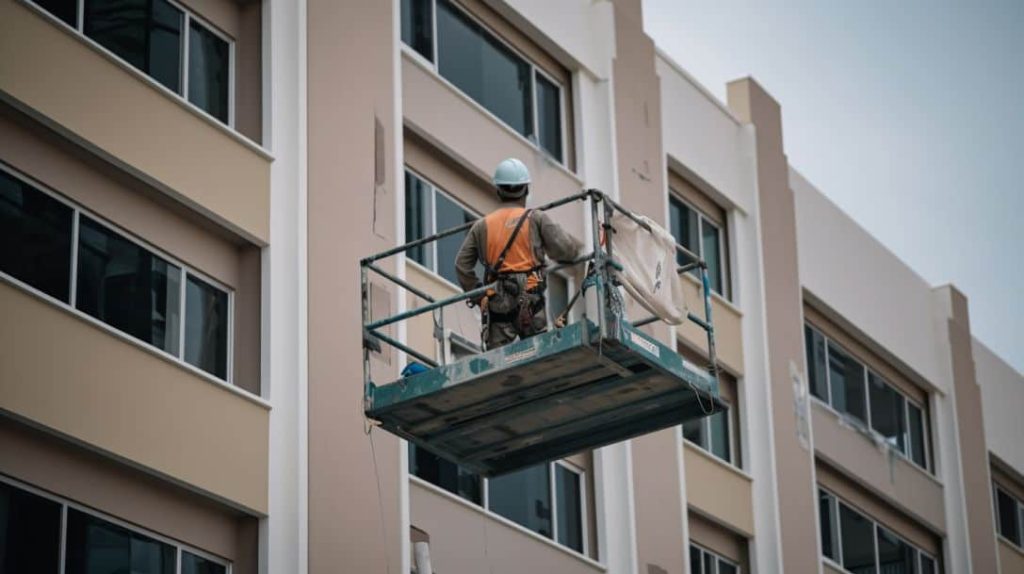
While temporary fixes are possible, retail properties require professional EIFS contractors for optimum, long-lasting repairs.
Qualifications and Certifications of EIFS Professionals
Reputable EIFS firms should have:
- Certification from the EIFS Industry Members Association (EIMA)
- Extensive manufacturer training on systems and applications
- DECS (Design, Evaluation, Construction, and Specification) certification
- Proper licensing, bonding, insurance
- Experience with commercial projects
The Risks of DIY EIFS Repairs
DIY repairs often fail due to:
- Improper materials or incompatible components
- Lack of technical knowledge of EIFS anatomy
- Inability to identify underlying issues
- Subpar workmanship and cracking/detachment
- Voided warranties from unauthorized work
This leads to higher costs in the long term.
Ensuring Quality Workmanship and Materials
Professional EIFS contractors ensure:
- Correct sequencing of installation steps
- Proper curing times for base coats and adhesives
- Usage of compatible system materials
- Precision cutting/fitting around penetrations
- Higher performance and longevity of repairs
- Warranties for workmanship defects
Hiring reputable EIFS experts is crucial for retail facade repairs done right the first time.
Start to Finish: EIFS Project Timeline

Executing an EIFS repair or installation project involves the following phases:
Initial Assessment and Quotation
- A thorough inspection of the property by an EIFS professional
- Analysis of issues and required work
- Review of desired finishes, colors, and details
- Development of itemized quotes for materials and labor
The EIFS Installation Process Explained
- Surface preparation: cleaning, repairs, substrate priming
- Base coat installation with embedded fiberglass mesh
- Applying primer coat
- Installing insulation boards with adhesive
- Applying the final aesthetic finish coat(s)
- Sealing, caulking, flashing, details finalized
- Clean-up and inspection of completed work
Project Completion and Follow-Up
- Final walkthrough and acceptance by owner
- Submittal of warranty documentation
- Return for minor adjustments during the warranty period
- Follow-up inspection after 1 year
Proper planning, phased installation, and post-project support ensure an efficient and successful EIFS facelift.
History and Problems of EIFS
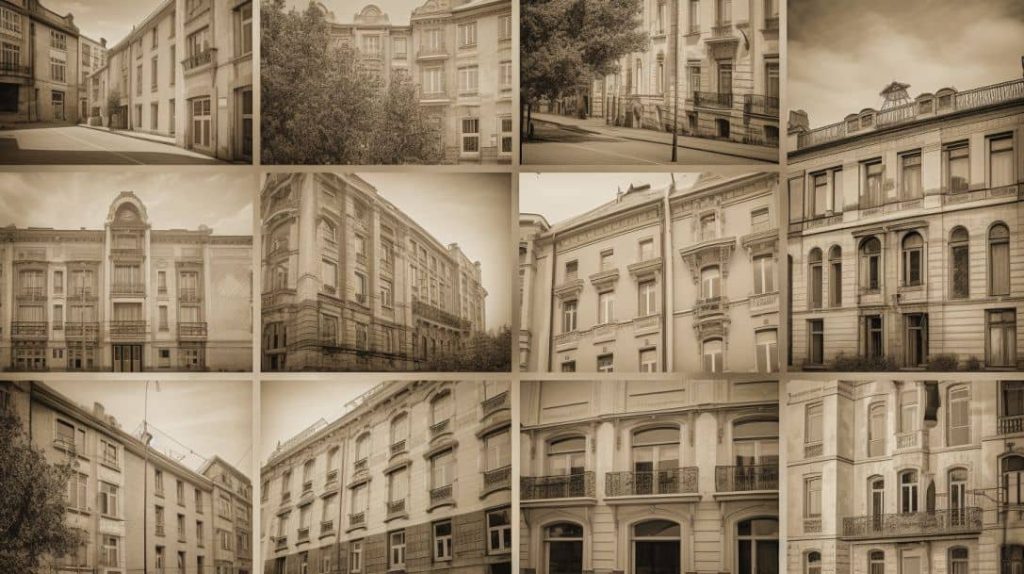
The Evolution of EIFS in Construction
Exterior insulation and finishing systems (EIFS) were first developed in post-war Germany in the 1950s as an innovative new cladding material. EIFS provided continuous insulation coverage and attractive acrylic finishes. As energy crises arose in the 1970s, EIFS gained popularity in North America as an energy-efficient facade alternative. However, by the 1990s, moisture and water damage issues arose in some EIFS projects, due to improper design, installation, and maintenance issues.
Addressing Past EIFS Controversies and Solutions
Lawsuits and controversy surrounded EIFS as some projects experienced rot, mold, and structural damage from trapped moisture. This led to negative perceptions of EIFS for a time. In response, the EIFS industry improved standards, training, and designs. Advanced formulations and integration of drainage mechanisms were introduced. By the 2000s, EIFS had rebounded as a high-performance, versatile cladding option. Continued innovation and quality assurance programs have made modern EIFS systems extremely durable and reliable for today’s buildings. While past moisture issues occurred in some projects, current EIFS materials and application standards have evolved to prevent these prior problems.
Drained EIFS: Function and Design Considerations
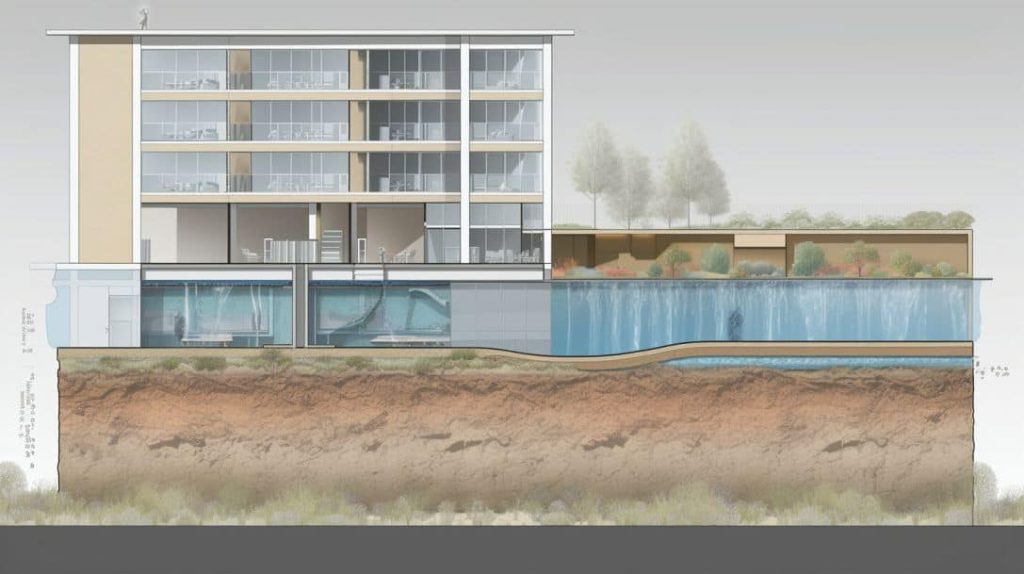
One of the most important innovations in EIFS technology has been the development of drained EIFS designs.
Drained EIFS include an interconnected drainage plane behind the insulation boards. This allows any moisture that infiltrates behind the EIFS to safely drain out of the wall system. The key components of drained EIFS are:
- Water-resistive barrier (WRB) layer behind the insulation
- Drainage mat or space for moisture drainage
- Flashing at all openings and penetrations
- Weep holes at bottom of wall to discharge moisture
Proper detailing and installation of drained EIFS requires expertise, but offers significant performance benefits:
- Preventing moisture accumulation in the wall
- Allowing walls to dry quickly if any water infiltration occurs
- Reducing the risk of rot, mold, and structural issues
- Extending the lifespan of the EIFS facade
Drained EIFS offers the best-practice solution for moisture management in EIFS assemblies.
Sustainable Design: How EIFS Can Help Retail Spaces Reduce Energy Costs
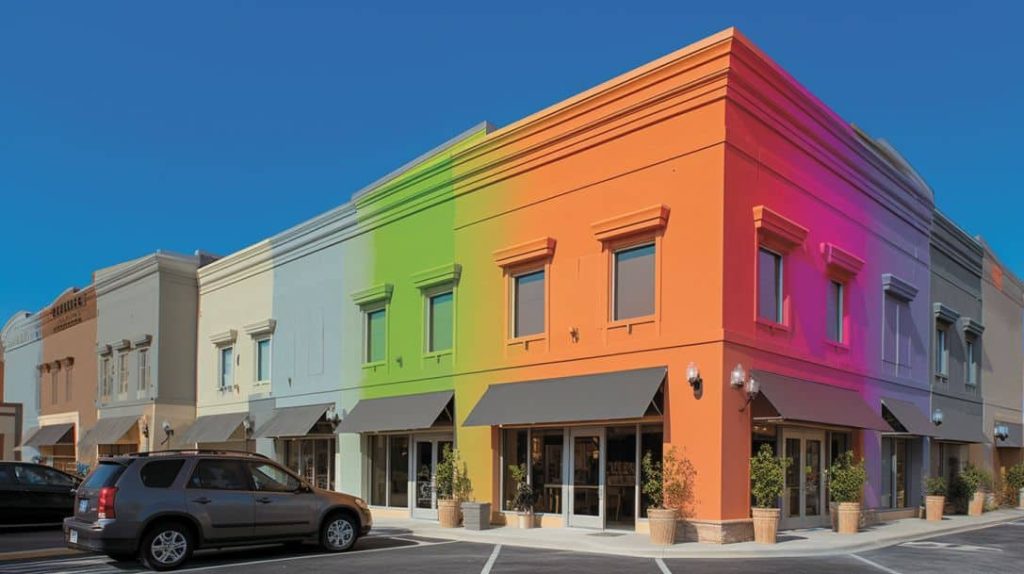
EIFS offers significant sustainable building advantages that can help retail properties reduce their environmental impact and energy expenses.
EIFS and Green Building Standards
EIFS can assist projects in achieving green certification through programs like:
- LEED certification
- Energy Star ratings
- Green Globes assessment
By improving insulation, reducing air infiltration, and lowering HVAC demand, EIFS align with green building best practices.
Long-Term Energy Efficiency Metrics
Properly installed EIFS yield considerable energy savings:
- 20-50% reductions in annual heating and cooling costs
- Shorter HVAC payback periods of 3-7 years
- Continued energy savings over decades of use
- Lower carbon emissions from reduced fossil fuel use
EIFS minimizes heat loss through walls, allowing retail spaces to operate with smaller, more efficient HVAC systems.
Conclusion
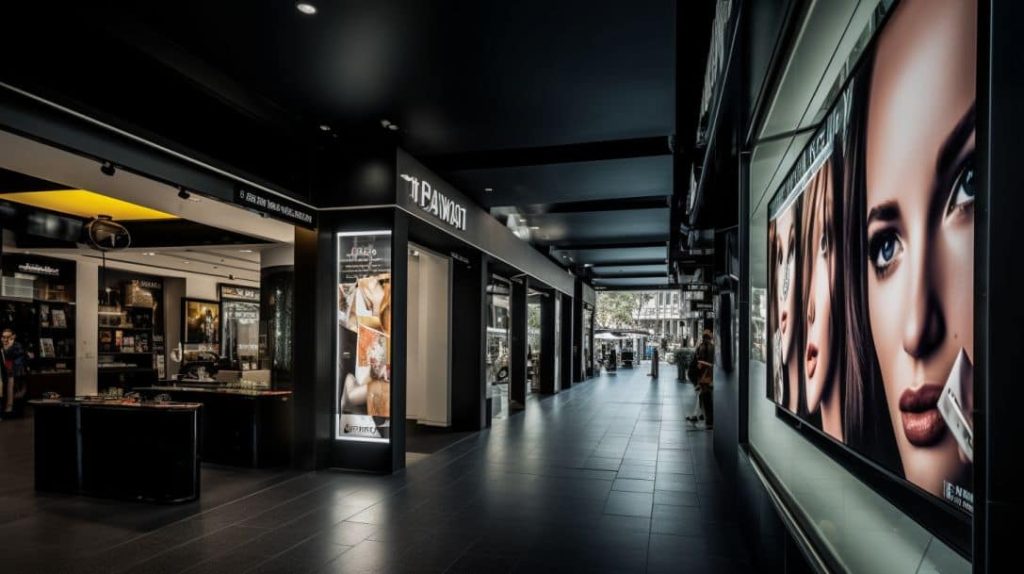
EIFS offers the ideal facade solution to reinvent struggling retail properties.
Recap of EIFS Benefits
- Dramatically transform aesthetics and curb appeal
- Substantial energy and cost savings potential
- Enhanced durability and longevity
- Customizable for branding and uniqueness
- Versatility to complement other materials
- Sustainability advantages like LEED credits
Final Thoughts on EIFS as a Strategic Investment
For any retailer facing slumping sales and high vacancy rates, investing in EIFS represents a prudent, profitable strategy. The capital outlay pays dividends for decades through:
- Attracting more customers and tenants
- Reducing operating expenses
- Extending building lifespan
Why Indiana Wall Systems is the Top EIFS Choice for Retail Spaces
With over 25 years of commercial EIFS experience, Indiana Wall Systems offers unrivaled expertise. Their certified EIFS contractors will execute your retail project professionally with quality materials to the highest standards. For a revitalized retail property that looks beautiful, maximizes efficiency, and delivers lasting value, choose Indiana Wall Systems.
Transform your retail space and pave the way for a brighter future with the power of EIFS.
With their thermal performance and sustainability attributes, EIFS is an ideal investment to reduce energy expenses for retail buildings over the long run.
FAQs
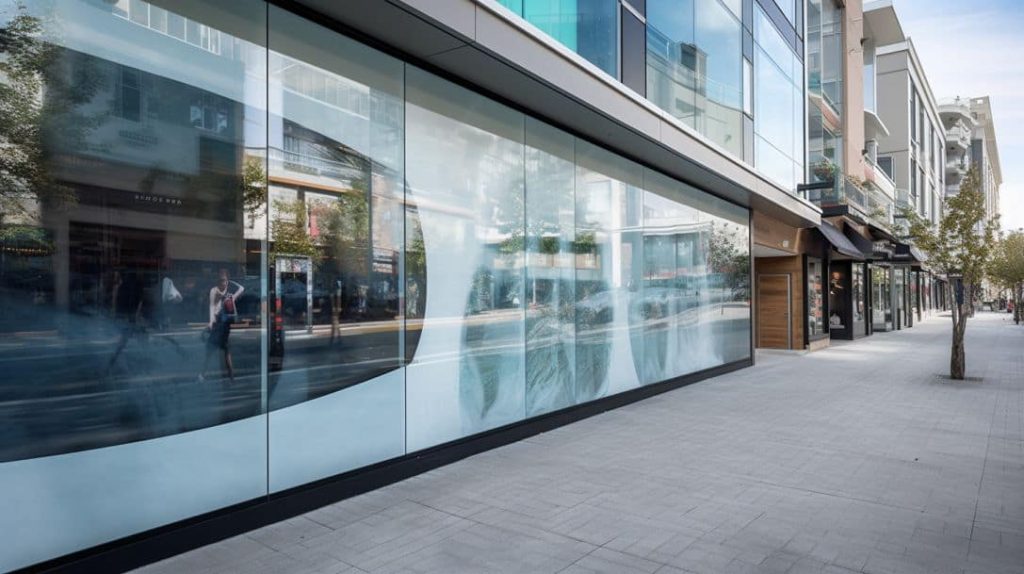
How can EIFS improve my retail property?
EIFS can enhance your retail property aesthetically through a broad palette of colors, textures, and finishes. EIFS also provides enhanced insulation to reduce HVAC costs significantly. EIFS are customizable to integrate branding elements and visibility.
What are the limitations of temporary EIFS fixes?
While low-cost, temporary EIFS solutions like minor crack repairs only provide short-term improvement. The underlying problems will remain and can worsen over time. For viable long-term repair, full inspection and remediation by EIFS professionals is recommended.
What qualifications should an EIFS contractor have?
Look for EIFS contractors certified by the EIFS Industry Members Association (EIMA). They should have extensive manufacturer training and hold a Design, Evaluation, Construction, and Specification (DECS) certification. Relevant experience completing commercial EIFS projects is vital.
How long does an EIFS installation or repair project take?
Most EIFS repair/replacement projects range from 2 weeks to 2 months depending on factors like square footage, access, and desired finishes. Permitting can also impact timelines. Consult your EIFS contractor for an estimate specific to your project.
Why are drained EIFS systems an important innovation?
Drained EIFS introduced a drainage plane behind the insulation to allow water to exit safely. This prevents moisture accumulation within the wall that could otherwise cause deterioration issues over time. Drained EIFS represents a best practice for moisture management.

